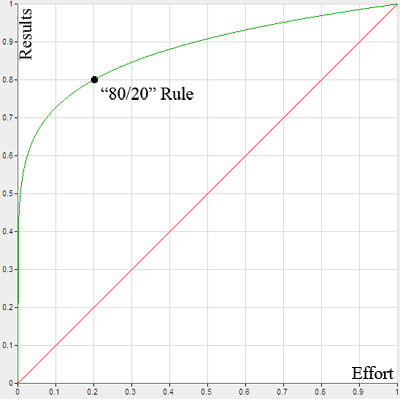https://www.facebook.com/rikodavidsukamto/posts/816604791880792
Renungan :
*DISRUPTION ERA HAS COME*
(Zaman Gangguan Sudah Datang)
(Zaman Gangguan Sudah Datang)
SIAPKAH KITA?
Tulisan Nana Padmosaputro
Tulisan Nana Padmosaputro
_Guys_, banyakkah diantara kita yang suka mengamati fenomena-fenomena dan kejadian sekitar, lalu merenungkan implikasinya di depan?
Banyakkah diantara kita yang sadar akan perubahan zaman yang kian mengerikan?
Perkembangan teknologi sedang _ngebut-ngebutnya_ lhoooo...
Ada yang _ngeh nggak_ , ini akan menuju kemana?
Ada yang _ngeh nggak_ , ini akan menuju kemana?
Banyak pekerjaan dan profesi bakal punah. Coba kita _list_ satu-persatu ya.
1. Kamera digital datang, pabrik roll film tutup, profesi tukang cuci cetak foto, raib....
2. _Compact Disc_ datang, kaset lenyap. Pabrik kaset tutup, buruh di PHK
3. Teknologi internet datang, CD menyingkir. Pabrik-pabrik tutup juga. Siapa korbannya? Tetap sama: Buruh.
4. Temuan proyektor mini datang, sebentar lagi TV akan hilang, pabrik TV akan punah (berikut dengan buruh-buruh dan pekerjanya)
5. _Internet banking_ datang.... pelan namun pasti _teller bank_ berkurang. Sebentar lagi pekerja-pekerja bank level operator yang jadi korban. _Nganggur_. Besar kemungkinan perbankan akan menciut tinggal bankir-bankir kunci saja yang bekerja.
6. Teknologi online, sudah membuat banyak supermarket, toko retail dan restoran tutup. Karena orang lebih suka belanja online. Siapa korbannya? Para penjaga toko dan pelayan restoran.
7. Perusahaan-perusahaan telekomunikasi, tumbang satu persatu. Kantor layanan pelanggan macam grapari tutup, karyawannya kemana? Dirumahkan.
8. Teknologi 3D printing datang, di China sudah ada gedung dibangun tanpa perlu banyak tenaga arsitek, insinyur sipil, mandor dan tukang bangunan. Bisa terbayang kan, sebentar lagi nasib para insinyur, tukang bikin maket, tukang gambar akan ngalami persaingan kerja yg kayak apa...??? Jutaan alumnusnya mau diserap kerja di mana?
9. Masih soal teknologi 3D printing. Orang akan bisa membuat dan memproduksi sendiri barang keperluannya... mulai dari piring gelas, sampai kutang dan aneka souvenir.
10. Era youtube datang, seniman dan artis penyanyi kejengkang. Mau jualan lagu gimana caranya kalau kaset dan CD sudah nggak ada begini....? Ya lewat youtube, bersaing dengan jutaan manusia awam lainnya yg ternyata pada pinter nyanyi....
11. Jalan tol tidak lagi membutuhkan tenaga manusia untuk menjaga booth tiket...
12. Era medsos sudah melanda. Setiap orang bisa menjadi jurnalis GRATIS dadakan dengan gadgetnya. Melaporkan kejadian apapun yang ditemukan di jalanan. Media cetak (koran dan majalah) sedang mengalami sakratul maut. Wartawan akan jadi profesi purba yang tinggal kenangan...
13. Buku online datang, percetakan gulung tikar... siapa korbannya? Pegawai kecil yang kerja mencetak.
14. Sudah ditemukan teknologi mengembang biakkan sel-sel daging ternak, sehingga orang tidak perlu lagi membangun peternakan untuk bahan pangan protein...
.......masih ada banyak lagi, coba saja amati dan sadari.
.......masih ada banyak lagi, coba saja amati dan sadari.
Lalu cari : siapa korbannya...????
Ya kamu. Kita. Anak cucu kita.
Bukannya anak cucunya Rockefeller atau Rothschild.
Tapi KITA...! Masyarakat menengah bawah, yang hanya memiliki skill sederhana untuk mencari nafkah. Skill yang akan mudah digantikan oleh robot dan mesin...!!!
Kalau kita betul-betul merenungkan ini, kita akan sadar bahwa dampaknya sangat langsung ke kehidupan kita :
1. Kemana anak-anak kita akan melanjutkan kuliah? Yakinkah kita, jurusan yang dipilihnya, masih akan menyediakan pekerjaan masa depan, 20 tahun mendatang...?
2. Masihkah kita akan melestarikan kebiasaan menikah muda dan memproduksi banyak anak... ketika kita sadar : kita akan mewariskan dunia yang semakin mengerikan persaingan kerjanya? Bukan hanya bersaing dengan sesama manusia, tapi juga melawan mesin dan robot (ingat keributan dan gelombang protes atas diterapkannya mesin di pintu2 tol...? Sayangku, kemajuan jaman nggak bisa berhenti hanya karena kita omelin & maki-maki)
3. Masihkah kita merasa puas ketika guru-guru menjejalkan anak-anak kita dengan aneka ilmu yang akan segera menjadi usang; dan bukannya mengajarkan caranya berpikir & membiasakan diri memikirkan solusi dan inovasi?
4. Masihkah kita akan merasa bangga jika anak kita bisa masuk universitas-universitas dengan bermodalkan hafalan ayat...?
5. Akankah kita bertengkar terus tentang theis dan atheisme... tentang agama anu dan ani... lalu lupa bahwa ada pasar global dan tsunami iptek yang harus dihadapi jika kita tak ingin anak cucu kita mati berdiri sambil memeluk kitab suci yang entah akan menolong dengan cara apa.
6. Masihkah kita akan memilih pemimpin negara dan pengelola daerah yang tidak tahu apa yang harus dilakukannya bagi kita, rakyatnya...???
7. Masihkah kita akan getol ngebahas kejayaan masa lalu, ketika bangsa lain sudah siaga menghadapi kenyataan baru (The New Reality)?
Jangan salah sangka. Aku bukan berniat mengusik hal-hal sakral atau super penting yang kalian anggap utama dan terutama dalam hidup.
Tapi tolonglah bangun sebentar dari
tidur siangmu, dan lihat : dunia kita ini sedang melaju dengan kecepatan penuh, ke depan.... dan sikonnya sulit diprediksi. Bersiaplah. Lakukan hal-hal yang SUNGGUH-SUNGGUH PENTING, bagi survivalmu & keluargamu....
Semua yg nyata akan baik adanya, suksesmu bukan jaminan untuk keluargamu, be creative !
tidur siangmu, dan lihat : dunia kita ini sedang melaju dengan kecepatan penuh, ke depan.... dan sikonnya sulit diprediksi. Bersiaplah. Lakukan hal-hal yang SUNGGUH-SUNGGUH PENTING, bagi survivalmu & keluargamu....
Semua yg nyata akan baik adanya, suksesmu bukan jaminan untuk keluargamu, be creative !
Selamat pagi &
Semangat pagi.... 🙏
🙏 💪
💪
Semangat pagi....





